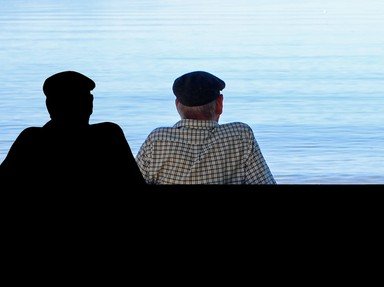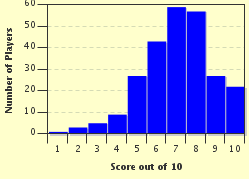Quiz Answer Key and Fun Facts
1. Do you know the name of the raft on which Norwegian Thor Heyerdahl, sailed across the Pacific Ocean from South America to the Polynesian Islands in 1947?
2. Several attempts had been made to climb Mount Everest, and the first climbing pair to reach the summit in 1953 were New Zealander, Sir Edmumd Hillary who was accompanied by a Nepalese sherpa. Do you know his name?
3. The famous English Captain, James Cook, sailed on three "Voyages of Discovery". For his first Voyage of Discovery In 1768, the 39 year old then Lieutenant James Cook was engaged by the Royal Society to sail into the South Pacific to observe what?
4. Female aviation pioneer Amelia Earhart, was awarded a medal for being the first aviatrix to fly solo across the Atlantic Ocean. What was this medal?
5. Situated on the Continent of Antarctica, the Geographic South Pole is the southernmost point of the Earth. Several attempts were made to reach the South Pole by different expeditions nobody succeeded until 14 December 1911. Do you know who led the party that achieved this great feat?
6. The Lewis and Clark Expedition, commissioned by President Thomas Jefferson to cross the US to the Pacific Coast, set out in 1804. Do you know the name of the native American woman who travelled with the expedition, acting as interpreter and helping out in other ways?
7. Sir Cecil John Rhodes, adventurer, diamond miner and politician, played a major role in shaping South Africa. What was the name of the diamond company he founded?
8. Jacques Cousteau, a French naval officer, was also an explorer, filmmaker, scientist, author, photographer and researcher and a marine conservationist. Do you know the name of his famous and iconic ship?
9. Henry Stanley, was famous for his exploration of Africa and for uttering the words "Dr Livingstone, I presume" when he found David Livingstone. Do you know in which country Henry Stanley was born?
10. One of the most famous mariners and explorers of all time was Sir Francis Drake. He circumnavigated the globe in his famous ship the "Golden Hind". Do you know what the name of this ship originally was at the commencement of this voyage?
Source: Author
wenray
This quiz was reviewed by FunTrivia editor
bloomsby before going online.
Any errors found in FunTrivia content are routinely corrected through our feedback system.

